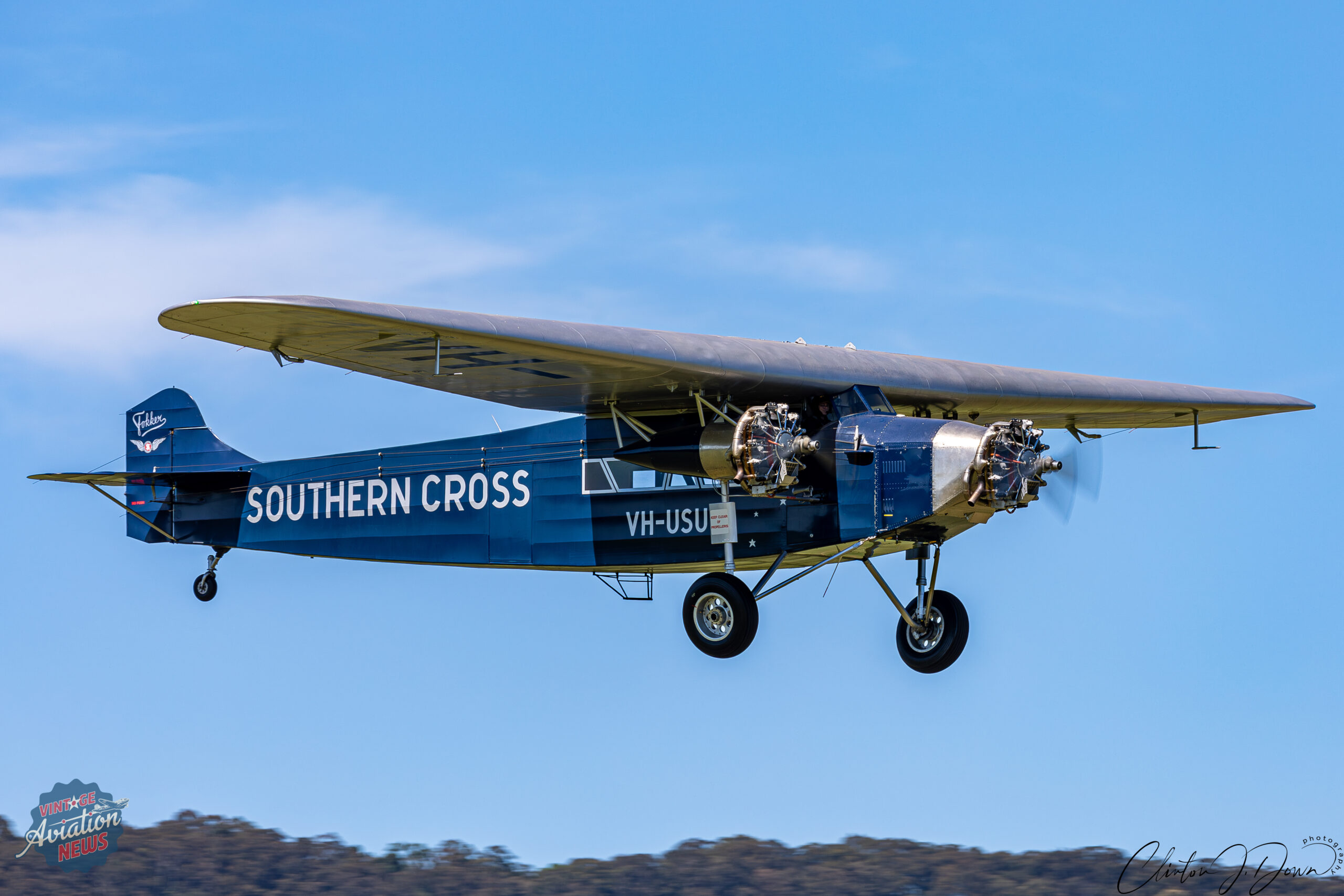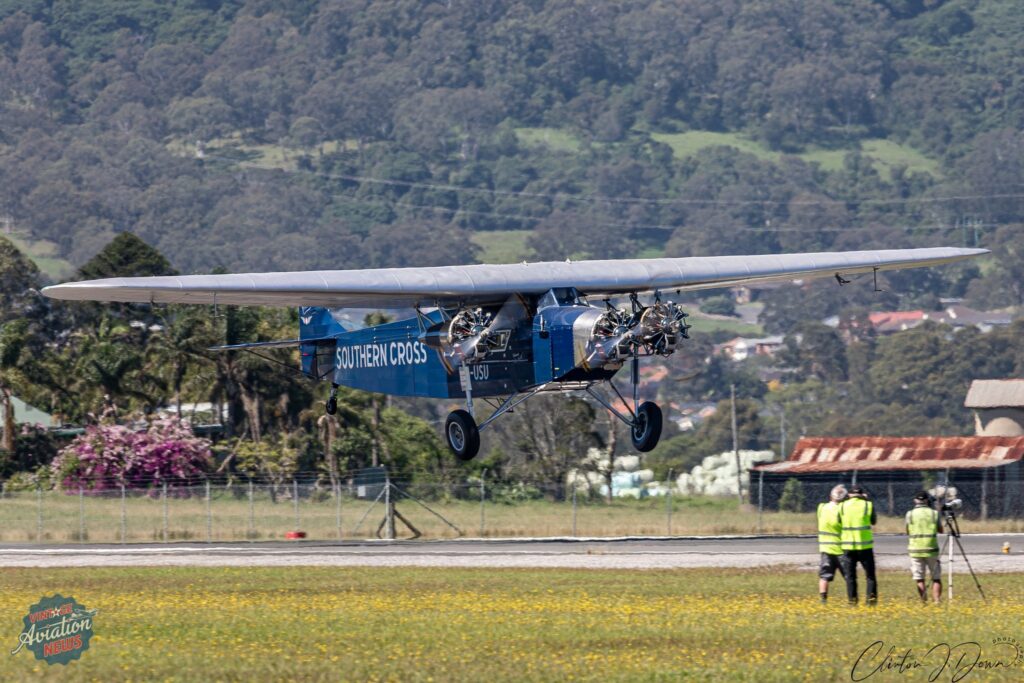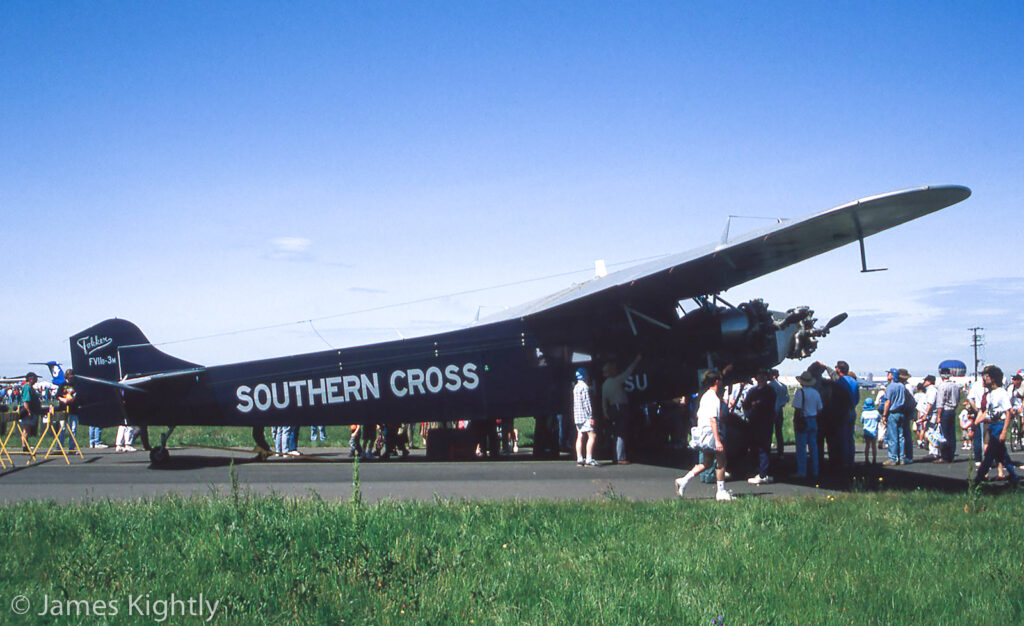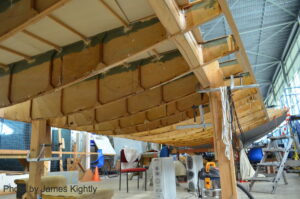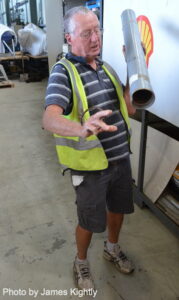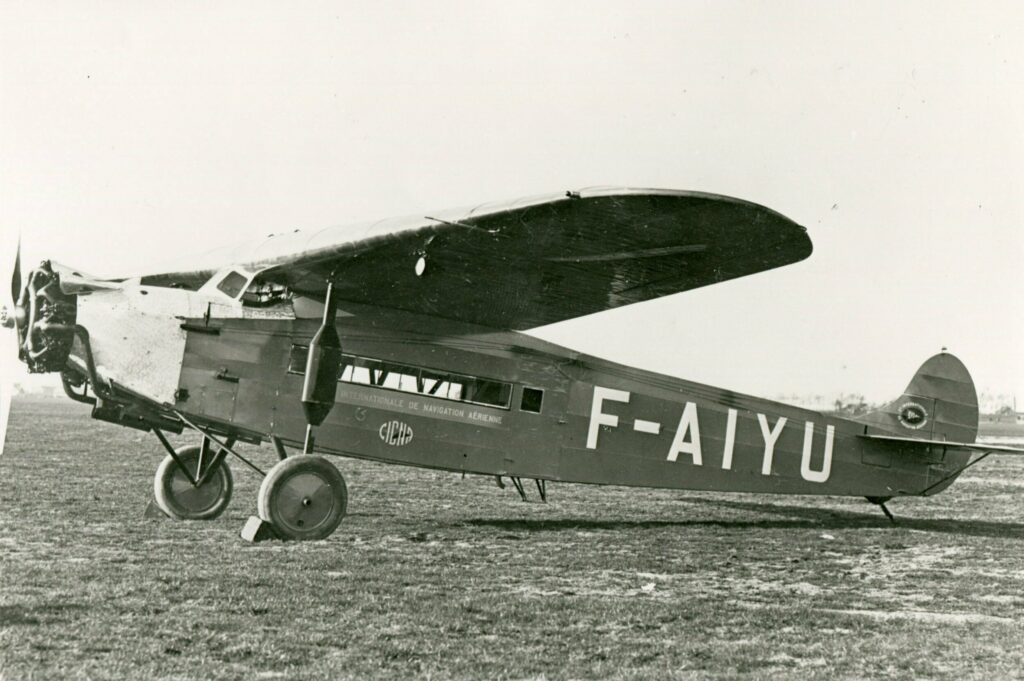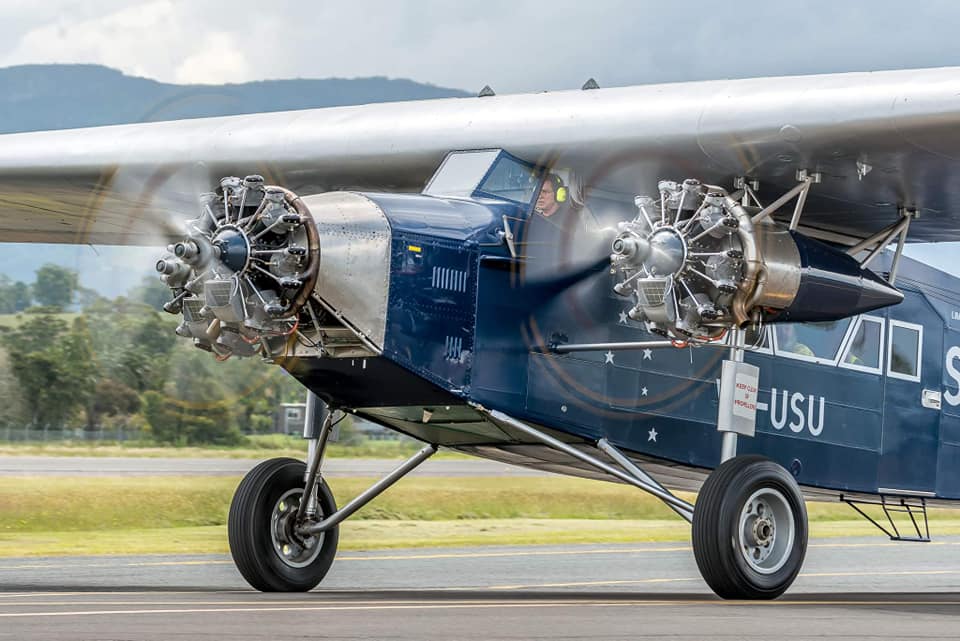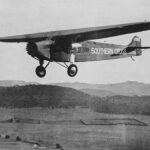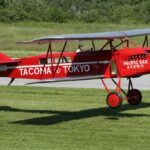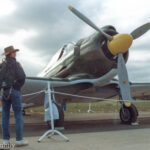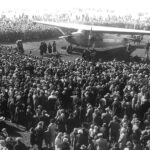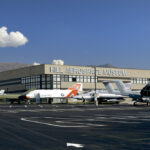After over 20 years on the ground, the Fokker F.VIIb Replica VH-USU ‘Southern Cross’, operated by the HARS Aviation Museum, of New South Wales, flew again in Australia on Tuesday 5 December 2023, departing off Shellharbour Airport‘s runway 34. With a helicopter escort, the Fokker Trimotor conducted a few laps around the Shellharbour area followed by a low fly-by before touching back down to the cheers of the HARS volunteers & many onlookers at the airport. This first flight has been a long time coming, and is the culmination of a huge amount of work by a dedicated team led by project engineering manager (and expatriate Englishman) Jim Thurstan. A public inaugural demonstration flight from HARS Aviation Museum was staged on Friday 8 December.
HARS President and Chief Pilot Bob De La Hunty said the effort of Jim and his team has been simply amazing.
“The damaged wooden plywood wing has been completely rebuilt to modern standards using traditional aircraft construction,” Mr De La Hunty said.
“While reconstruction of the Southern Cross Replica also has involved rebuilding the fuselage, landing gear, overhauling the three Jacobs radial motors, the electrical system and installing new radios the end result looks almost exactly like Smithy’s Old Bus – it’s a flying work of art.”
The Southern Cross is a flying replica of the famous record-breaking ‘Southern Cross’ Fokker F.VIIb of Sir Charles Kingsford Smith, in which he set and broke multiple aviation records in the 1920s and 1930s. The original and authentic historic aircraft has been preserved and is on show in a special air conditioned, glassed-in building at Brisbane airport, Queensland. One of the world’s most historic flying machines, it will never fly again. (Our report on this historic record-setting aircraft can be seen here.)
The largest flying replica aircraft in the world, the modern VH-USU ‘Southern Cross’ Fokker is a flying tribute to pilots Sir Charles Kingsford and Charles Ulm who, with Americans Harry Lyons as navigator and Jim Warner as the radio operator, made the first flight across the Pacific from America to Australia in June 1928 – taking 83 hours over nine days — a feat up to then considered nearly impossible, given the technology of the era, and certainly very risky. They became international heroes.
Sir Charles Kingsford Smith, with a number of other crew members, went on to set and break multiple aviation records in the 1920s and 1930s.
The modern replica of the Fokker airliner was conceived by John Pope and built in Adelaide, South Australia between 1980 and 1987 as a tribute to ‘Smithy’ – as he was widely known. The ‘Southern Cross’ replica design was mastered by C. W. ‘Bill’ Whitney. Following available drawings and inspections of the original aircraft, the replica concept was redesigned and drawn by Bill to comply with modern airworthiness requirements and different (albeit correct period) radial engines. The team were able to obtain the Australian civil registration worn on the original aircraft; VH-USU, to use again.
The ‘Southern Cross’ is a faithful replica built to modern standards using the traditional aircraft construction of steel tubing and timber with doped Irish linen for the fuselage, and an all-wooden (spruce and plywood) one piece wing. It is the largest one-piece wing ever made in Australia.
The new VH-USU trimotor toured widely within Australia, and once visited New Zealand during the 1988 Australian Bicentennial celebrations, and logged 560 flight hours from 1987 to 2002, raising money for the Royal Flying Doctor Service.
After many years successful flying, on the 25th May 2002 at Parafield airport, South Australia, a main wheel detached on takeoff. By making the landing on the one good wheel and the tailwheel, the pilot kept the damaged wheel off the ground for most of the landing run, but as the airspeed decreased, eventually the wingtip had to come down, and on contact with the ground three meters of the tip sustained surface and internal structure damage. Given the circumstances, it was as good an outcome as could be achieved.
Above: Images taken in 2016 showing the aircraft under restoration. Dave Homewood and James Kightly interviewed Jim Thurstan (pictured) in 2016 for the Wings over Australia podcast series, here. Click images for captions.
After considerable negotiation, HARS acquired the aircraft from the South Australian Government in 2010, and set about the restoration to flight. While repair to the wheel leg and undercarriage was not a major task, the time elapsed meant there was a significant job to be undertaken with the rest of the airframe.
The rebuild of the one piece wing was a notable task alone, as the largest stressed skin, wooden wing structure built since such types ceased production in the 1940s. The modern rebuilt de Havilland Mosquito wings are also single piece units, and designed for far higher airspeeds and loading, but of 54 feet span, versus the Fokker’s 72.5 feet (16.5 vs 22.1 meters).
The Fokker F.VII family were some of the most important airliner, freight and record types used in the inter war period, before being supplanted by the all-metal types from Boeing and Douglas. Available in a wide variety of configurations and engines, the majority had one nose and two under wing engines and became known as the ‘Fokker F Seven’ or Fokker Trimotor, before the Ford Trimotor inherited the informal name.
Fokker’s initial success in the United States came to a literally crashing end with the death of the Notre Dame football coach Knute Rockne in the fatal accident involving a Transcontinental and Western Air Fokker F.10 Trimotor on March 31, 1931, due to the failure of the wooden wing structure. The crash also changed the approach to safety and operation of airlines thereafter.
Before that accident, the Fokker F.VII family had been used by aviation companies and individuals worldwide for record flights, exploration and pioneering airline, airmail and freight flying.
No original Fokkers of this transport family are airworthy. The replica ‘Southern Cross’ is fitted with three 300 hp Jacobs engines, as the original Wright Whirlwind type engines are rare and not suitable for this aircraft’s operation. It also has overhauled propellers, and other minor modifications required for safety and modern airways flying.
The restoration project has been funded by donors led by Robert Grienert and noted Australian aviation personality and adventurer Dick Smith. HARS are now also seeking additional support from the community to keep the ‘Southern Cross’ replica flying.
At the time of the 2002 accident, the ‘Southern Cross’ replica had only flown some 560 hours. After this rebuild and exciting return to flight, with a public demonstration flight on Friday 8th December, 2023, we look forward to reporting on many more being notched up in the future!
Replica Fokker F.VIIb Specifications: Builder: ‘Famous Australian Aircraft Pty Ltd’. Current Owners/Operators: Historic Aircraft Restoration Society Inc. Engines: 3 x Jacobs R-775 A2, seven cylinder air-cooled radials of 12.4 liters, 300 bhp (224kW) each. Maximum takeoff weight: 5,700 kg (12,566lb). Length: 14.3 m (46.9 ft). Wing span: 22.1 m (72.5 ft). Height: 4.3 m. Cruising speed: 155 km/h (83 kts, 96 mph). Max speed 185 km/h (99 kts, 115 mph). Ceiling: 8,500 ft. Range: 7.5 hr endurance. Crew: 2 x pilots. In 2016, Dave Homewood and James Kightly interviewed Jim Thurstan about the Fokker’s restoration as par of the Wings of Australia series from Dave’s Wings Over New Zealand podcasts. You can listen to the interview here.







